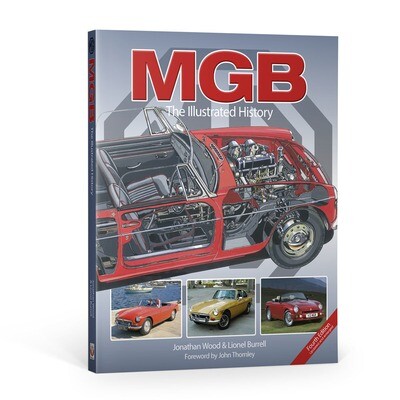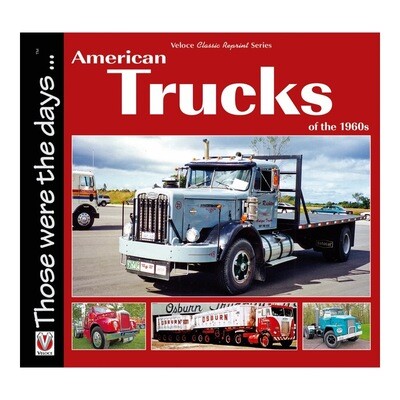
HONDA/ACURA NSX
By Brian Long
Hardback • 30.5x25cm • 288 pages • 528 pictures
LIMITED TO 500 COPIES
The book of the NSX – the thinking man's supercar
From Brian Long comes this new updated and revised edition of his much lauded history of the Honda/Acura NSX. Expanding on previous editions, created with direct help from those who worked on the project, including NSX and S2000 Chief Engineer Shigeru Uehara, this edition brings the story up-to-date to cover all of Honda's NSX models including the second generation (NC) cars.

Opening with a brief history of the Honda company, Honda/Acura NSX focusses on the period between 1990 and 2022, revealing how the NSX concept came to be, and charting the life of the NSX model through to the end of second generation production.
With extensive engineering and technical details covering engine, transmission, and performance statistics for both generations, Brian Long has created a complete and detailed history of the NSX, including details of rare and limited number models, such as the NSX-R GT and Type-S Zero of the first generation, and NSX Type S second generation model.
The NSX in motorsport is also covered, and detailed appendices including worldwide sales and production figures for both generations make this a fantastic record of the history of the NSX.
A history of success
Revealing how, in it's early years, Honda gained much success in a short period of time, the opening chapters describe how Honda conquered the European motorcycle market by winning the legendary Isle of Man TT, and – only a year after it created its first production road car – found success in the world of F1.

Fast forward nearly three decades, and an Acura-badged NS-X prototype appeared at the 1989 Chicago Auto Show, heralding Honda's entry into the world of supercar makers.
Detailing the origins of the car, early chapters reveal how the NSX was created with a clear set of parameters in mind: it had to be fast, with a top speed of around 170mph and sub-14 second ¼ mile time, and have breaking equivalent to Ferrari or Porsche, plus a thoroughbred chassis, capable and highly refined, but user-friendly at the same time.
The NS-X should be regarded as a sports car in its own right, the equal of anything Porsche or Ferrari can produce. Autocar & Motor

The first generation NSX proved highly popular with the motoring press and consumers: highly flattering comparisons to contemporary Ferrari and Porsche offerings showed that little convincing was necessary that this was a genuine supercar. Brian and Miho Long 's 1999 interview with Chief Engineer of both NSX and S2000 projects, Shigeru Uehara, at Honda's Reasearch & Development facility near Motegi, takes the reader deep into the genesis of the NSX.
Compared to the Porsche 911 and Ferrari 328 Honda had on hand at Tochigi, the NSX was faster, more responsive, more secure and predictable. It was also a lot more fun. Motor Trend

The first generation NSX was discontinued in 2005, and the range of updates and changes made over its 15 year history are covered, including the car with which the NSX bowed out with a bang – the NSX-R GT, a car based on an aggressively modified and revised Type R. A few years of rumours and whispers followed, but it wasn't until 2012 that production of a second generation (NC) NSX was confirmed, thanks to an appearance at the 2013 Frankfurt Motor Show. But delays meant that it was three years later, at the Detroit 2015 motorshow, that the actual production car was finally unveiled.
A clean slate
This updated and revised edition includes brand new chapters covering the second generation NSX extensively, showing how the new NSX really was an 'all new' car, created after much consultation with the original development team and assisted by Ryoji Tsukamoto (a key figure in the story of the Honda S2000). Chief Engineer Ted Klaus' aim was to create "a human- centred supercar that responds to the will of the driver." Body, powertrain, chassis components and interior were thoroughly revised, with testing was undertaken all over the world, with significant amounts of time devoted to tracks such as the Virginia International Raceway, Suzuka, and the Nürburgring. To provide realistic reference points, the NSX was tested extensively on public roads across America and Europe, and often in convoy with its Porsche 911 Turbo, Ferrari 458 Italia, and Audi R8 V10 competitors.

No book on Honda or the NSX would be complete without a thorough description of Honda's pedigree motorsport heritage, and it's no surprise that both first and second generation NSX appearances in motorsport, in a number of guises wordlwide, are detailed. From Honda's early entries into IMSA and SCCA series, to F1, JGTC and the T1 and GT2 cars, based on factory NSX-R shells, that made three appearances at Le Mans in 1994, 1995, and 1996), to BPR Series.

The final NSX sold in 2022, an Acura-badged Type S, number 350, and finished in Gotham Grey. Production numbers for the 2nd gen NSX were low, even when compared to the likes of McLaren and Aston Martin, but the model never fell out of favour with the motoring press or public – its allure today is greater than ever. Regardless of sales figures, the NSX can still be considered a resounding success, putting Honda/Acura firmly back on the map just when its domestic image was flagging, and serving as a testbed for Honda's future electrification plans. Above all, the NSX provided an accessible supercar car for the thinking man.
This book is strictly limited to 500 copies.
- A Limited Edition of 500 copies
- Written with the full co-operation of the Honda factory
- Full year-by-year coverage of all production models – first and second generation – in one stunning volume
- Details the NSX models sold in different countries
- Includes interview with NSX and S2000 Chief Engineer Shigeru Uehara
- Stunning contemporary pictures, including rare prototypes
- Reproductions of original sales brochures and advertising literature
- The NSX in motorsport
Please note that discount codes and vouchers DO NOT APPLY to this book. Please see our Terms & Conditions for more details.






